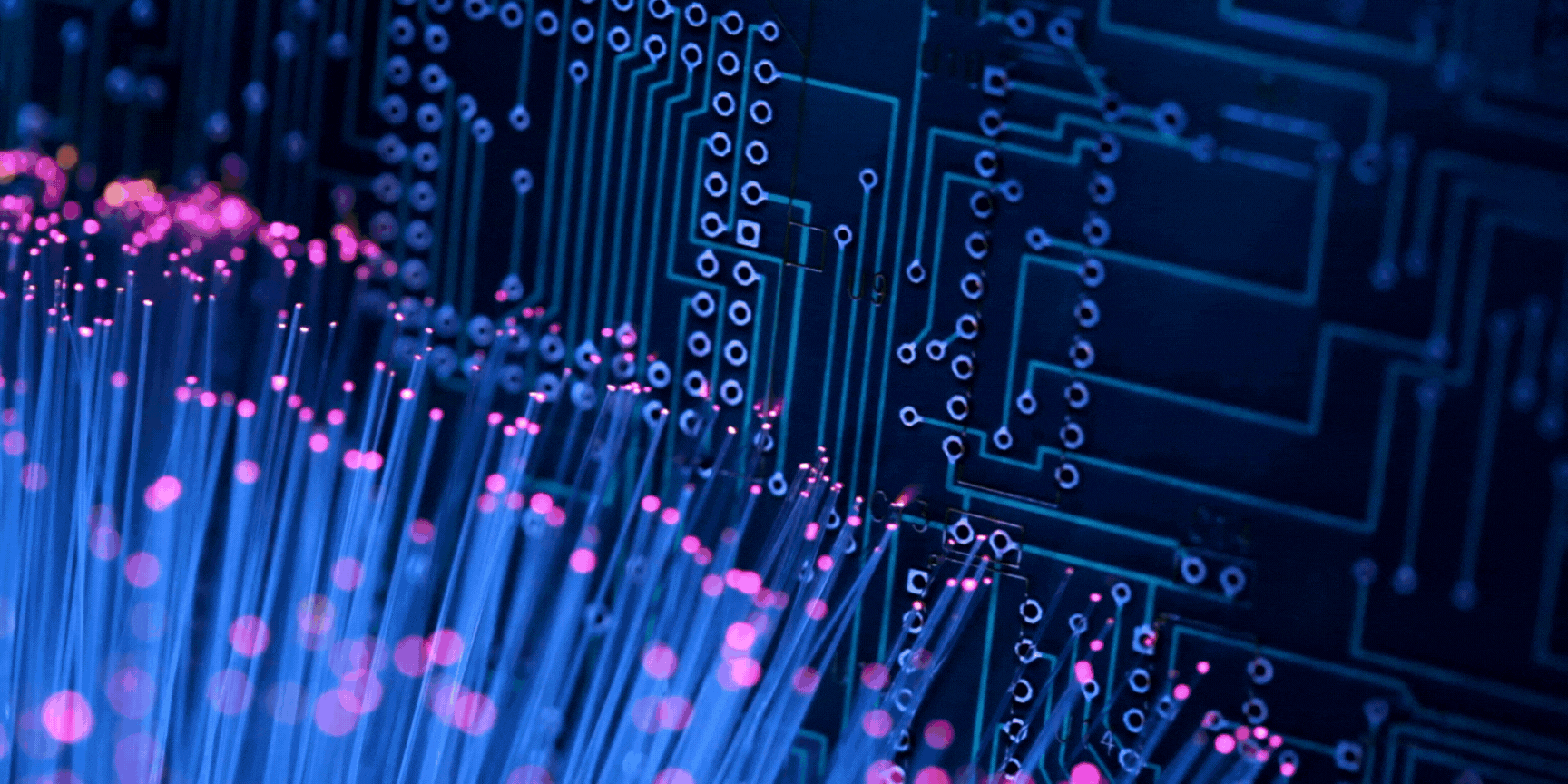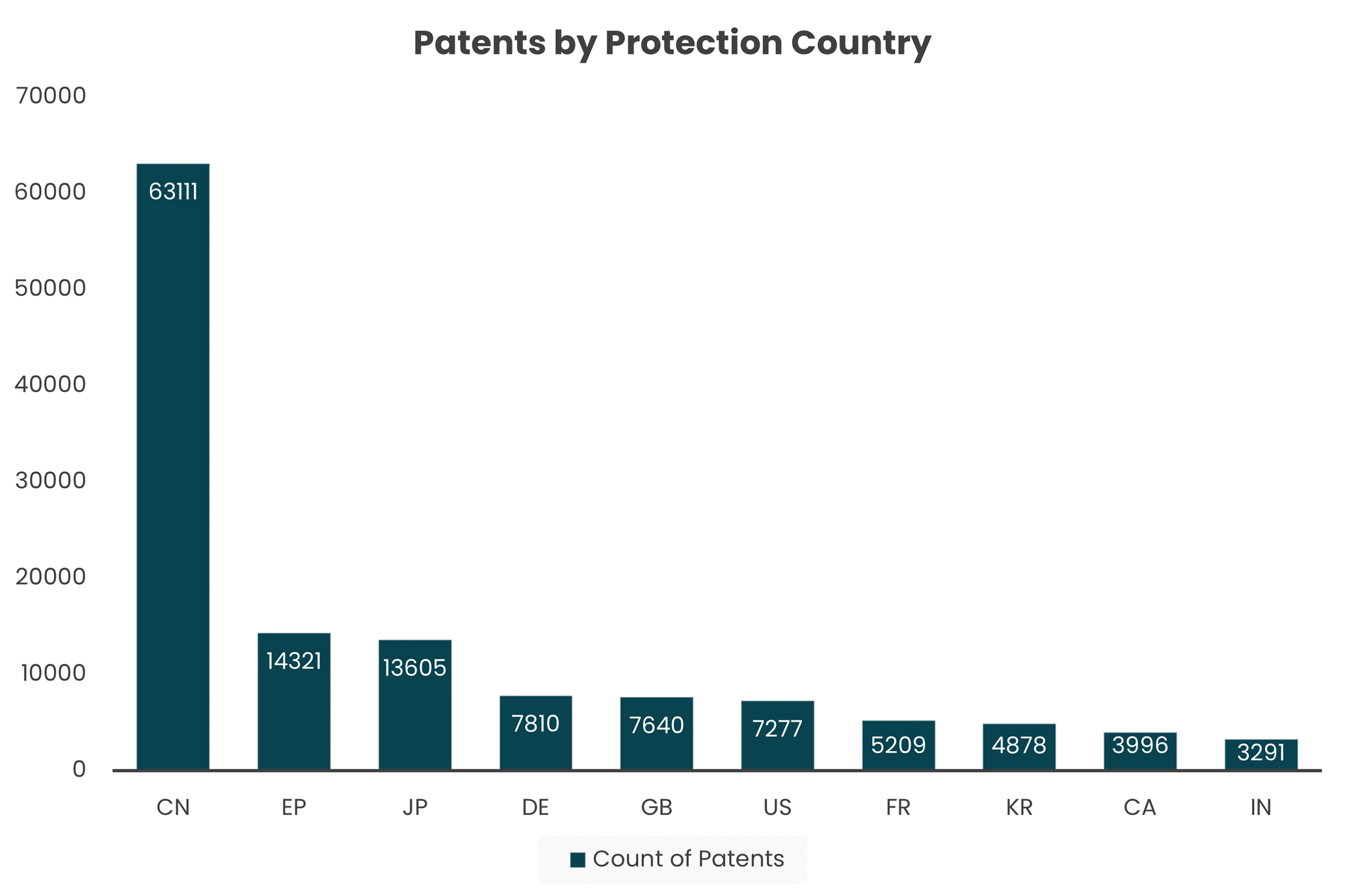Optical Fiber - A Practical Solution for Fast-Paced Communication
Introduction
Optical fiber communication is a widely used technology in the current generation of communication networks. For the deployment of fast-paced communication, optical fiber plays a key role due to its features such as fast-paced communication capabilities, lightweight, etc. Recently, its use cases have been increasing at a high pace. This blog discusses some essential components or characteristics of optical fiber communication. The blog further discusses IP-Moats, SEP trends, and standards related to optical fiber communication.
Optical Fiber Components and Working Mechanisms
Optical fibers are fibers that use light pulses for the transfer of signals or information. The main components of an optical fiber are the core, cladding, coating, strengthening member, and outer jacket. Each of the components is described as follows-:
Figure 1: Optical Fiber (Source)
Core-: It is the finest part of the optical fiber and is made of glass or plastic. It is used to carry optical signals from one point to other. The material used to make the core is of a higher refractive index.
Cladding- The core of the optical fiber is surrounded by cladding and serves as a boundary to the core. The material made in Cladding is of a lower refractive index than the core.
Coating- It is used to protect the main components, the core, and the cladding of the optical fiber. It prevents the fiber from twisting and external shocks.
Strengthening member- It acts as a protective covering to the core and cladding and provides strength to the fiber. It also helps in reducing crosstalk between the fibers.
Outer jacket-It provides an outer covering or sheath to the optical fiber and protects the cable from various environmental hazards.
Optical Fibers work based on the total internal reflection (TIR) principle. Inside the fiber, light travels from a higher refractive index medium, such as a core, to a lower refractive index medium, known as cladding. The light is refracted back into the same medium with an angle of incidence greater than a critical angle.
Figure 2: Total Internal Reflection (Source)
Types of Optical Fiber
Single-mode Optical Fiber- These types of fiber have a small diameter core and allow only one mode of light to travel through the fiber. It is used for long-range communication as the signal can travel long distances due to fewer light reflections.
Multimode Optical Fiber-: This type of fiber with a larger diameter core than the single-mode fiber. It allows multiple light reflections to take place and thus makes it useful for transceivers, computer networks, etc. The Multimode optical fiber is further divided into two types-
Step Index Multimode Fiber- In this mode, the light travels in a zigzag manner, i.e., bouncing off the cladding. This results in different “modes” of light arriving at various times at the other end of the fiber. Inside the fiber, the core is made entirely of one type of material, and the cladding is made of another type.
Graded Index Multimode Fiber- The core comprises a range of materials that help reduce the dispersion present in the Step Index Multimode Fiber. The lower index glass in the core transmits the higher angle light rays (known as higher order modes) faster than, the lower index glass near the center of the core. It causes the light rays to move at varying rates.
Figure 3: Optical Fiber Family Tree (Source)
Advantages of Using Optical Fiber for Communication
Optical fiber has various advantages, making it popular for use in several types of communication. Some of them are described briefly as follows-:
1. High bandwidth and fast speed-The optical fiber provide high speed as it uses light as a source to transfer information.
2. Compact size and light weight- As they use glass material and are of small diameter, they are more compact and lightweight than copper cables, so they occupy less space than copper cables. It also has a longer timespan due to its structure.
3. More Security-It provides more security than another type of communication, i.e., prevents the sneaking of information from other people.
4. Less interference- It provides protection from external noise or shield through external cross-talk.
Optical Fiber Communication architecture/system
Figure 4: Optical Fiber communication system
The basic Optical fiber Communication system consists of the following:
· Information Source- It is the source of information, like sound or electrical, which needs to be transmitted further.
· Electrical Transmit- It refers to the electric transmit circuit which provides electricity to an optical source to convert the signal from electrical to optical form.
· Optical Source- It consists of LED or laser, which converts the signal from electrical to optical.
· Optical fibers- These refer to the optical fiber cables which carry the optical signal from the transmitter/source to the receiver/destination.
· Optical detector- Photodiodes (p–n, p–i–n or avalanche), phototransistors can be used as optical detectors, which provide the demodulation of the optical carrier or signals. It detects the optical signal and performs the optical–electrical conversion.
Electrical Receiver- The receiver receives the information in its original form, i.e., in the electrical form after conversion from optical to electrical form. From the Electrical Receiver, the information reaches the destination.
Industry Outlook
The major companies producing fiber optic communication-related products are Sumitomo Corporation, Kaile Science and Technology Co Ltd, Corning Incorporated, and Furukawa Electric Co Ltd. They manufacture a wide range of equipment and systems, such as fiber optic cables, network terminals, Broadband Systems, etc., for various sectors such as telecommunication, submarine, military and defense, and automobiles. Other players are SterliteTech,CommScope, FuTong,Fujikura, and many more.
IP-Moats - Patent Trends for Fiber Optic Communication
As observed from figure 5, the top five assignees related to Fiber Optic communication systems/networks are Huawei, SGCC, Qualcomm, Nippon, and IBM. In jurisdictions, the highest count of patenting activity can be seen in China, followed by Europe and Japan, as shown in figure 6.
Figure 5: Top patent Assignees
Figure 6: Country-wise Filing Patent Statistics
Maximum patent filing (9654) was done in 2017 as shown in figure 7. The last two years have seen a decrease in count due to the lag between patent application and publication. The technology domain with the maximum patent filings is Optics, Telecommunications, and Digital Communication, as shown in figure 8.
Figure 7: Yearly rends of Patent Filing
The main technology area of patent filing is Optics, Telecommunication, and Digital Communication, as shown in figure 8.
Figure 8: Technology Domains of Patents Filed
Standards and SEPs related to Fiber Optic Communication
The leading organizations involved in the setting of the standards related to fiber optic communication are-:
i. ISO (International Organization for Standardization)/ IEC (International Electrotechnical Commission) - Standards under it mention Fiber optic components. For example, IEC 60794 mentions optical fiber cables, IEC 61202 mentions fiber optic isolators, etc.
ii. TIA (Telecommunications Industry Association) - It is commonly known as "FOTPs (Fiber Optic Test Procedures)" but officially known as "TIA-455-x, e.g., TIA-455-34 is FOTP-34 which mentions Interconnection Device Insertion Loss Test, FOTP-27 mentions about Fiber Diameter Measurements, they keep on updating their standards regularly.
iii. ITU (International Telecommunications Union) – It has developed several standards for several types of fibers like G.652, which mentions the characteristics of a single-mode optical fiber and cable, G.654, which mentions the characteristics of a cut-off shifted single-mode optical fiber and cable.
iv. ETSI (European Telecommunications Standards Institute)- The 3GPP standards, which ETSI governs, have information related to Optical Fiber Systems like ETSI TS 103.247(Single-mode Optical Fiber System Specifications for Home Cabling), TS 101.573, etc. (Source 5).
The top assignees of SEP patents related to fiber optic communication are shown in the figure below. It is observed that the main SEP patent assignees are Vecima Networks, Nokia, Gain Speed, and SanDisk. The Standard Essential Patents relate primarily to ETSI 3GPP TS38.213,25.331; IEC-61753/61754, ITU-G.989.1, G.9802 and ANSI-INCITS-414.
Figure 9: SEP’s Assignees Related to Fiber Optic Communication
The highest number of SEP patents have protection in the US, followed by China and Europe, as shown in figure 10.
Figure 10: Country-wise filing SEP statistics
Conclusion
Fiber optic communication demand will expand more in the future with the development of telecommunication technology, such as in 5G network infrastructure, in the military for increased security purposes, biomedical research, remote sensing, and in automobiles for fast data transmission.
*Disclaimer: This report is based on information that is publicly available and is considered to be reliable. However, Lumenci cannot be held responsible for the accuracy or reliability of this data.
*Disclaimer: This report is based on information that is publicly available and is considered to be reliable. However, Lumenci cannot be held responsible for the accuracy or reliability of this data.
Author
Editorial Team at Lumenci
Through Lumenci blogs and reports, we share important highlights from the latest technological advancements and provide an in-depth understanding of their Intellectual Property (IP). Our goal is to showcase the significance of IP in the ever-evolving world of technology.














